Home » Σ Paddle Kneader: Z Series
Σ Paddle Kneader: Z Series
Kneader
Details of Kneader
- The machine comprises a motor, cover press, main body, mixing chamber and rotor mechanism, gearbox, air control system, tilting machine, heating/cooling system, rubber belt transmission and base, etc.
- The kneader can be made into vacuum, pressure, atmospheric, Normal temperature, high temperature, low temperature, etc.
- The temperature adjustment method of a kneader can be the jacket, halfpipe, far-infrared tile, steam, hot water, heat transfer oil, electric heating, cooling water, chilled water, and other methods.
Application: Paint, Adhesive, Battery, Pharmaceutical industry, Cosmetic
The kneader can be used for kneading and mixing rubber and vulcanized rubber of various high-viscosity and elastic-plastic materials. Many factories or laboratories are inseparable from it in the production and manufacture of silica gel, sealant, hot melt, food gum base, and pharmaceutical traditional Chinese medicine preparations.
The kneader is a unique mixing and stirring equipment. Generally, there are two Σ paddles, and the parallel intersecting differential type arrangement is used, which can make one paddle faster and the other paddle faster. Slower, resulting in high shear forces. Different paddle speeds allow the materials to be kneaded to be cut quickly so that the materials can be mixed in an optimal state.
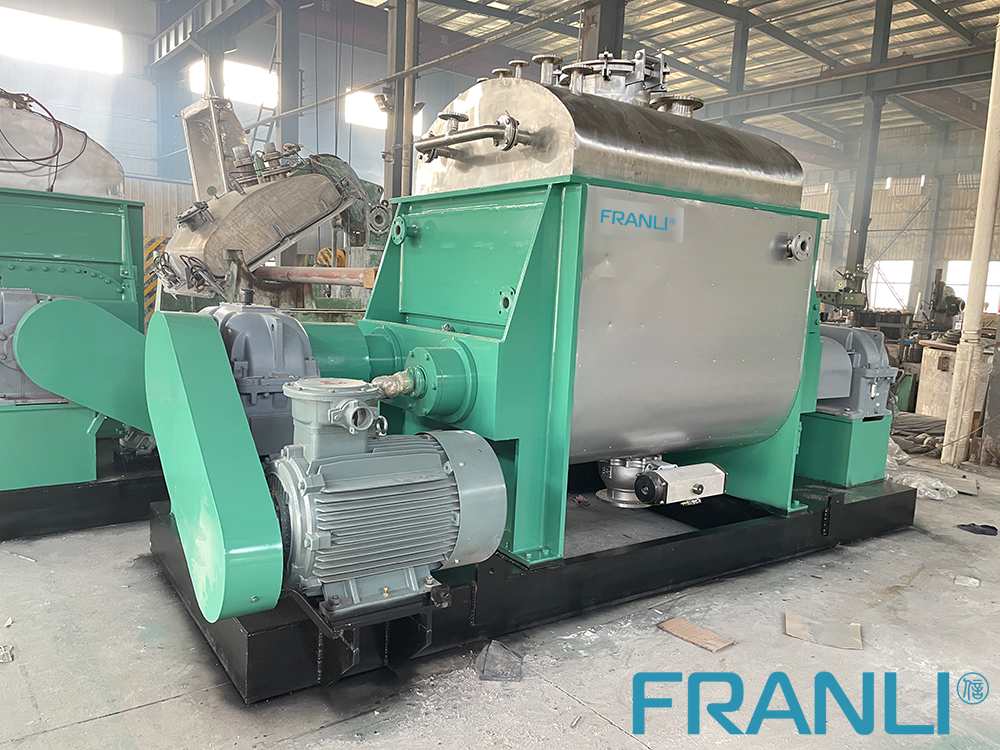
The kneader can be made into four types: universal type, working pressure type, vacuum pump type, and high-temperature type. The temperature control methods include collet, steam, oil heating, and cooling water. Hydraulic presses are used to turn over the cylinder and open the cover. Feeding methods include hydraulic press, cylinder turning, valve feeding, screw extrusion, etc.
How the kneader works
1. The kneading machine is mainly composed of five parts: kneading part, shaft seat part, hydraulic transmission system, transmission device, and electronic control system. The hydraulic transmission system uses a hydraulic oil pump to control the large hydraulic cylinder to perform opening and closing functions. The hydraulic transmission system uses a hydraulic oil pump to control the hydraulic cylinder to perform functions such as turning over the cylinder and opening the cover. The key points and main parameters can be determined by the customer. Free selection and regulation, convenient and reliable operation. The transmission device is composed of a motor, a reducer, and a worm gear, and the motor is matched according to the model and specification of the kneader.
2. The transmission part of the kneader is the synchronous speed ratio of the motor. After passing through the coupling to the reducer, it is driven by the input and output equipment to make it reach the required speed ratio, and the speed can also be changed by the frequency converter.
3. The kneader has two Σ-shaped paddles. The speed of the two paddles is different. Different speed ratios can be set according to different technologies. The most common speed ratio is 42/28 rpm.
4. The kneader can be designed with or without heating according to the requirements. The heat transfer methods usually include an electric heater, steam heat exchanger, heating with boiling oil in the circulation system, cooling water in the circulation system, etc.
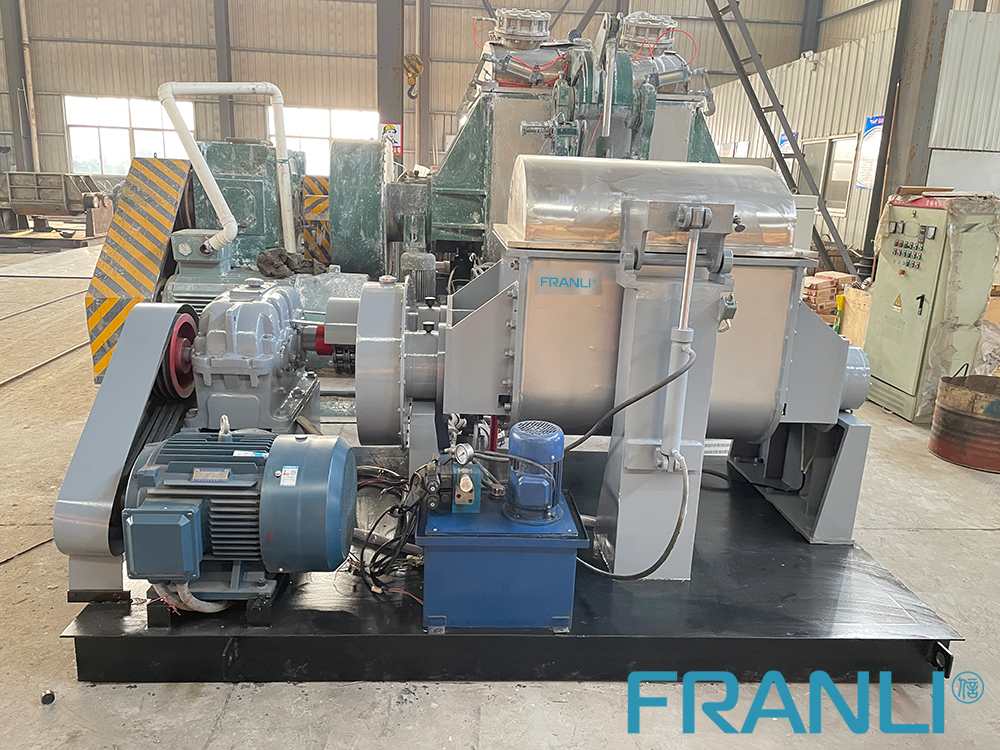
Components of a kneader
The key parts of the kneader are composed of a mixing and kneading part, a shaft seat part, a hydraulic transmission system, a transmission device, and an electronic control system. The hydraulic transmission system uses a hydraulic oil pump to control the large hydraulic cylinder to perform opening and closing functions. The hydraulic transmission system uses a hydraulic oil pump to control the hydraulic cylinder to perform functions such as turning over the cylinder and opening the cover. The key points and main parameters can be determined by the customer. Free selection and regulation, convenient and reliable operation. Its transmission device is composed of a motor, reducer, and worm gear, and is equipped with a motor according to the model specification of the kneader.
The transmission part of the kneader is the synchronous speed of the motor. After passing through the coupling to the reducer, it is driven by the input and output equipment to make it reach the required speed. It can also be changed by the frequency converter.
The feeding methods of the kneader include a hydraulic machine turning over the cylinder, valve feeding, screw extrusion, etc. The engine block and the contact part between the blade and the raw material are made of SUS304 stainless steel plate to ensure product quality.
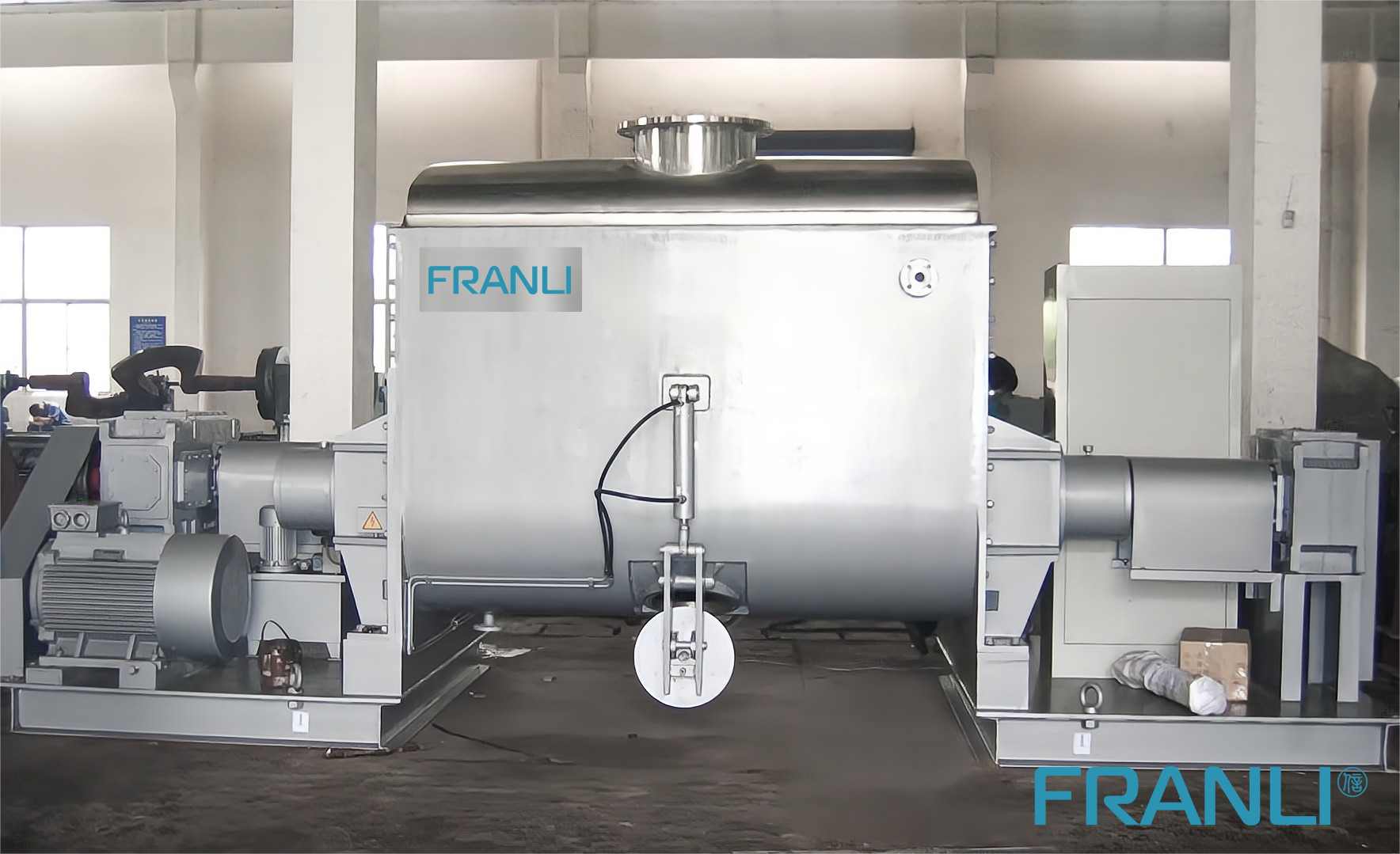
Precautions for using a kneader
1. The operator wears work clothes, masks, goggles, and other labor protection supplies.
2. When feeding, the principle of “uniform feeding, a small amount, and fast feeding” should be followed to maintain continuous and uniform feeding according to the process requirements.
3. When purging the injection pipeline and starting to spray materials, the operator should stay away from the nozzle to avoid being splashed by steam or material liquid. When removing the nozzle, the pressure should be released first to ensure that the pressure in the injection pipeline is not suppressed before the nozzle can be removed.
4. It is strictly forbidden to put hands or other tools into the rotating equipment during the operation of the equipment. If you want to clean up the material on the kneader, you must first stop the kneader and disconnect the circuit breaker, then hang a warning sign and arrange for personnel to guard the power distribution room or lock the door of the power distribution room.
5. When entering the kneader to clean up materials, wear protective equipment such as goggles, masks, and gloves, and wear shoe covers at the same time to prevent debris from contaminating the materials in the system.
6. When overhauling the kneader, it is necessary to disconnect the circuit breaker of the kneader, put up a warning sign and arrange for special personnel to take care of it or lock the door of the power distribution room. After the inspection is over, the person in charge of the inspection will take off the warning sign and clean up the inside of the kneader and the sundries on site.
7. It is strictly forbidden to use overload to avoid electric burnout. If a fault is found, the motor should be stopped immediately for an inspection. Do not let the mechanical equipment work with a disease, so as not to cause a greater accident.
8. When parking, stop spraying first and then stop feeding. After the spraying is stopped, the material in the spraying pipeline should be blown off with steam in time to avoid the remaining material from blocking the pipeline.
9. When cleaning the material inside the kneader, wear rubber gloves and wear footwear when entering the kneader. After the material falls on the skin or eyes, it should be cleaned with water or boric acid in time.
10. When the equipment is parked, non-workers are not allowed to start the mechanical equipment at will to avoid accidents.
11. After the equipment is overhauled, clean up the sundries in the equipment in time to avoid the sundries entering the system after driving and affecting the product quality. At the same time, the operator should test the machine together with the maintenance personnel or electricians to ensure that the motors run in the correct direction after maintenance and that the equipment runs normally.
12. When it is necessary to adjust the elevation angle of the kneader, it is necessary to ensure that the iron plate at the discharge port does not collide with the granulator. So as not to crash the equipment or stir the iron plate into the granulator.
Welcome to send inquiry to us and let’s make a win win business together !
Guidelines For Kneader
The dispersion kneader is suited for rubber and plastic mastication, as well as the blending of different rubber and plastic components. Small and medium-sized rubber and plastics manufacturers with a wide range of product types and colours, as well as food, dyes, pharmaceuticals, and ceramics, can benefit from the internal mixer.
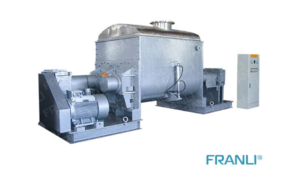
Sigma Kneader: The Solution for Mixing and Kneading
Sigma kneader is a versatile machine that can be used for mixing, kneading, and homogenizing a wide range of materials, including high-viscosity products.
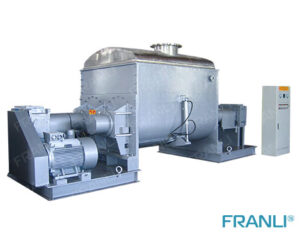
Sigma Mixer: Indispensable Equipment For Manufacturing
Sigma Mixer is a type of mixer that uses a unique mixing principle to achieve an efficient blending of materials. The mixer consists of two blades that rotate in opposite directions, creating a kneading and folding action that ensures thorough mixing. The blades are shaped like the Greek letter Sigma, hence the name Sigma Mixer.

Sigma Blade Mixer: The Mixing Solution
The Sigma Blade Mixer is a robust and reliable mixing machine that uses a unique mixing principle to achieve superior results. It is a type of double-arm kneading mixer that features two blades that rotate in opposite directions.

Vacuum Kneader: A Machine for Your Mixing Needs
The Vacuum Kneader is a type of mixer that utilizes a vacuum chamber to create a homogeneous mix of ingredients. It is designed to knead, mix, and disperse high-viscosity materials under vacuum conditions, resulting in a superior product.

Efficiency and Effectiveness of Dispersion Kneader
The dispersion kneader has complete control over the mixing and blending of the raw materials to create an even mix that allows for better distribution. This device contains a mixing chamber with rotating blades made of high-quality steel.

Vacuum kneader: high efficiency and environmental protection
A vacuum kneader is mainly used for stirring, mixing, and kneading high-viscosity and elastic-plastic materials. The most common fields include high-viscosity sealant, silicone rubber, neutral acid glass glue, chewing gum, bubble gum, aluminum silver paste, silica gel, paper pulp, cellulose, and other materials. It covers food, agrochemical, pharmaceutical, cosmetics, electronic paste, and other industries, and has been sought after by the industry.

